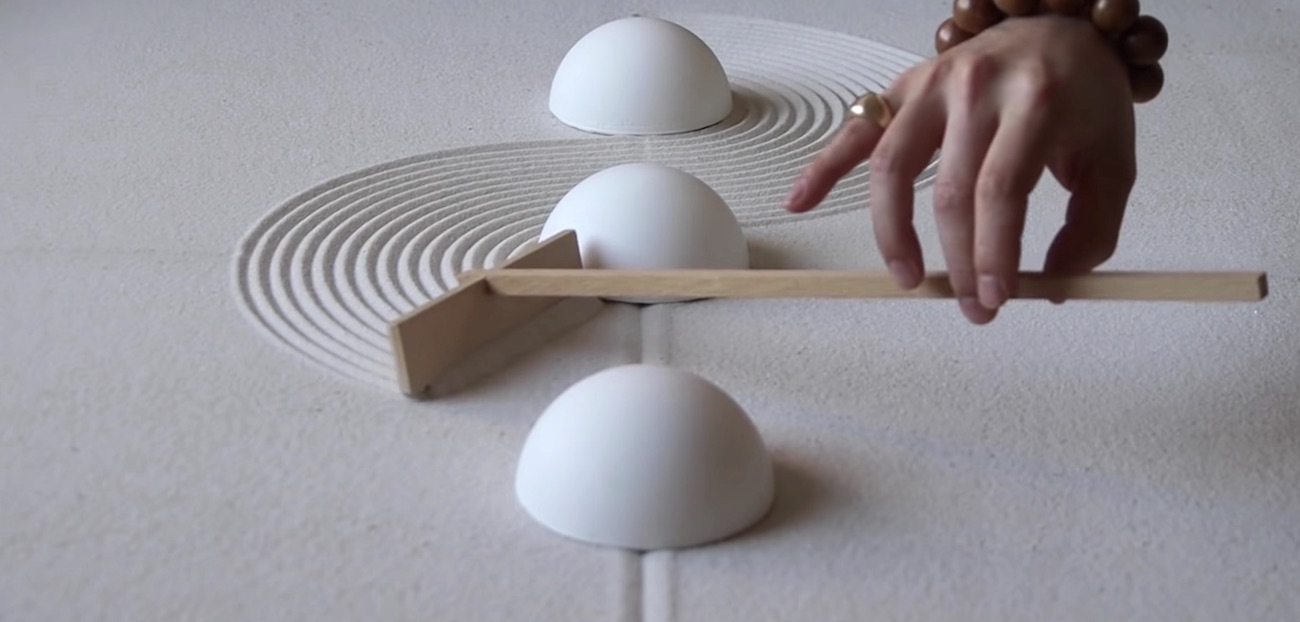Why Everyone Is Talking About Their "Inner Child" Lately + How To Talk To Yours
Many therapists are big proponents of the concept of the "inner child."

Image by Ridofranz / iStock March 31, 2023 The idea of connecting with your “inner child” is seemingly everywhere these days, especially on Instagram and TikTok. Even beyond the internet, many therapists and wellness practitioners are starting to implement inner child work into their sessions, claiming that healing your inner child is key to better mental health as an adult. But what exactly is an inner child, and why is the concept becoming so popular?
Advertisement
This ad is displayed using third party content and we do not control its accessibility features.
What is an inner child?
The concept of the inner child isn’t a new one, but it has gained immense traction over the last few years. Often, this concept references the wounded inner child, a younger version of us who experienced a difficult event (or several) that they were too young to fully process, leaving their wounds “stuck” in our bodies.
“Inner child work can take many forms, but essentially it invites us to turn toward these young internal parts and recognize how they continue to influence our experience of adult life,” says Aimee Rai, a trauma specialist and founder of the International School of Holistic Healing.
Inner child work is often done with the help of a mental health professional. London-based therapist Sally Baker practices it as a “guided visualization that takes an adult client on an imaginary journey to meet their younger self at a time of crisis or trauma.” She explains, “The process helps the adult feel empowered to step into the past when their younger self felt unprotected and at risk and would imagine physically carrying them to a pre-chosen place of sanctuary they have created.”
Why inner child work is having such a moment right now
The hashtag #innerchild has close to 1.5 million entries on Instagram, and TikTok is equally chock-full of content related to the concept. We hear prominent figures like Kendall Jenner, The Bachelor contestants, and others talk openly about doing inner child work on the regular. You’ve also probably heard about it from your friend, your therapist, or your babysitter, because it’s just that ubiquitous. But why now?
Generally speaking, the subjects of therapy, self-care, and overall wellness have crossed firmly into the mainstream over the past few years — especially among millennials and zoomers, who no longer think of these concepts as taboo, and actively preach about the importance of this kind of self-work. While this is undoubtedly a wonderful development that has huge potential to bring us as a society into greater healing, Rai points out the “wellness” movement can also have a dark side — namely, the pressure to keep up with visible (and often expensive) “self-care” practices being extolled by others.
“Even the wellness industry can have an aggressive edge to it — so much of our pursuit of wellbeing can be driven by low self-esteem and the feeling that we need to better ourselves,” she explains. “It is not uncommon in my experience for our healing to become quickly co-opted by the underlying trauma, turning it into a frantic and shame-fueled process of trying to fix what we perceive as being ‘wrong with us.’”
As such, Rai believes that many of us are craving a deeper — and, more importantly, gentler — form of self-work. That’s where inner child work comes in — a practice that’s firmly rooted in gentleness and self-compassion.
“I think that as a culture we are beginning to adopt a more trauma-informed mindset when it comes to well-being, and in turn we are becoming more gentle in our approach,” she says. “I think that perhaps this is why there is a growing interest in inner child work. It invites us to tend to the underlying cause rather than the symptom, and it invites us to do so in a very tender, curious, and compassionate manner.”
Advertisement
This ad is displayed using third party content and we do not control its accessibility features.
What it means to heal your inner child
Inner child work can be an amazingly powerful vehicle for healing. “It is beneficial because when one experiences trauma early in life they get ‘stuck’ developmentally,” says Victoria Beck-Williams, LPC, a licensed therapist at Thriveworks in Houston, Texas. Let’s quickly note here that, while trauma is usually thought of as occurring following extremely dramatic one-off events, it can sometimes refer to any upsetting event that we feel unable to process (sometimes known as micro-traumas). Rai notes, “Charles L. Whitfield estimates in his book Healing The Child Within that around 90% of us ‘didn’t receive the love, nurturing, and guidance necessary to feel good about ourselves.’”
As a result of these “stuck” experiences, one might be “unable to move through Maslow's Hierarchy of Needs (physiological: food and clothing; safety: job security; love and belonging needs: friendship; esteem; and self-actualization), and certain needs as a result go unmet,” explains Beck-Williams.
“When you do inner child work, you are able to identify the unmet needs, and begin to in essence ‘parent’ yourself. This will allow the person to reconnect and move through the developmental stages and become ‘whole’ again.”
How to connect with your inner child
Inner child work often deals with some of our most painful experiences from when we were younger. “As such, to do inner child work safely, we may need a skilled guide,” says Rai. “I would always recommend seeking out a trauma-informed therapist if financial resources permit, and if not, going slowly with the assistance of books and online resources, taking care to stop if we start to become emotionally overwhelmed.”
In the meantime or in addition to therapy, the following methods will help you connect with your inner child. They’re safe to practice yourself — just don’t forget to go slow.
Advertisement
This ad is displayed using third party content and we do not control its accessibility features.
1.
Make space for your big feelings
Sometimes when we experience a strong emotional response to something, we have a tendency to either get overwhelmed by it and let it guide our behavior, or to repress the emotion so we don’t have to feel the pain. But, according to Rai, “Any time we become flooded by strong emotions, it is likely we are having an emotional memory of an earlier life moment.”
A healthier response to strong emotions is to “learn to self-soothe, take a breath, and name how we are feeling,” she says. “This is a way to let our inner child know that they are seen, and that we are listening.”
The theory is that, even though your younger self might not have been able to handle such a strong emotion, your adult self is able to hold space for it. You can speak to your inner child (aloud or in your head) to let them know they’re safe. “I always find it useful to place a hand on my heart and say, ‘I am angry,’ or ‘I am scared right now,’ or ‘I’ve got you,’ in a gentle and accepting tone,” Rai says.
2.
Nurture your emotional wellbeing
“If our emotional needs were not prioritized when we were young, we may have a tendency to re-enact that neglect in cycles of self-abandonment,” says Rai. To break these cycles, practice noticing the activities that help you feel balanced and try to integrate them into your routine.
“Making a manageable commitment to journal a few times a week, spend a few minutes meditating each morning, or spend a day in nature once a month — and sticking to it — is a way to signal to our inner child that someone is now looking after them,” she says. “We don’t have to judge or shame ourselves if we run out of time or forget, but like a firm loving parent teaching a child to brush their teeth, we also don’t just let it slide. Our emotional well-being matters. We matter.”
Advertisement
This ad is displayed using third party content and we do not control its accessibility features.
3.
Write a letter to your younger self
Similar to journaling, another powerful way to connect with your inner child is to address them directly in writing (or as a conversation out loud or in your head, if that feels more comfortable to you). “You might pick an age that was particularly challenging for you, or notable experiences from your childhood,” says Charlotte Fox Weber, a UK-based psychotherapist and author of What We Want. “Writing a letter and addressing who you were and what you went through can be powerful and illuminating.”
To get you started, Fox Weber suggests the following prompts to ask yourself and explore:
Advertisement
This ad is displayed using third party content and we do not control its accessibility features.
4.
Get to know your playful side
Playing is an essential part of a child’s life, so if for any reason, you weren’t able to be silly or play as much as you might have wanted to when you were younger, it’s important to explore that side of you now that you can.
“Think about what things you liked to do as a kid or never got to try that you wanted to,” Rai says. “Dancing, singing, playing an instrument, sports, cooking, drawing, and painting are common things I hear from clients. Play is the key word — we don’t have to feel good at it. I also often encourage people to jump on a swing or go down a slide the next time they see one.”
She adds, “Welcoming back these playful parts is a lovely way to attend to the needs of the inner child who was burdened with too much too young.”
Speaking to someone else in order to connect with your inner child might seem counterintuitive, but, for Rai, “every time we reach out for help and connection, we tell our inner child that they are no longer alone.” This is especially powerful if you have the sense that you felt emotionally lonely as a child, and that this translates into your adult life as well.
Rai explains it this way: “If we are fortunate enough to have just one or two people in our lives who might be safe enough to share with — who might be capable of listening without becoming overwhelmed themselves or imparting unsolicited advice — then we might practice sending a message or picking up the phone when we feel sad, stressed, or confused,” she says.
6.
Work with a therapist you trust
A trained therapist can help you explore and cope with any painful memories and emotions so that you can release them safely. According to Beck-Williams, a therapist can help you reflect on the initial trauma, process through those feelings, and identify how those past hurts are showing up in the present. From there, they can help you “work toward finding healthy replacements for those behaviors that come from the past hurts.”
The takeaway.
Inner child work is having a moment right now, and for a good reason. At a time when even Prince Harry is bringing the complex topic of trauma to the forefront and mental health books are topping bestseller lists, it makes sense that people are becoming curious about approaches like inner child work that offer a gentle and even playful approach to healing.
A great therapist can guide you through the process of connecting to your inner child, but even if you can’t work with a mental health professional for any reason, the methods above will all help you connect with — and move towards healing — your inner child in a tender and loving way.

 Lynk
Lynk 


































